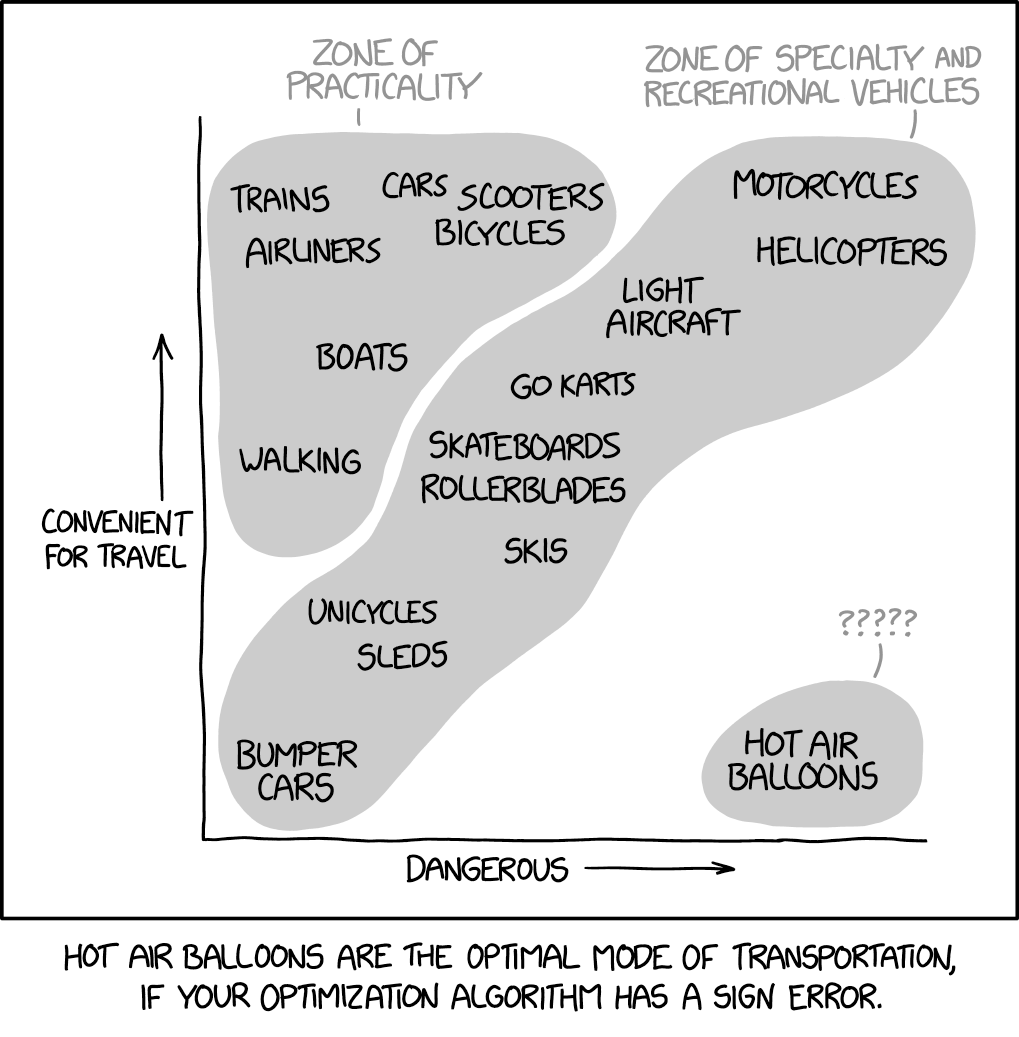May 31, 2024
#2940: Modes of Transportation explain

[A chart is shown, where the Y axis is labeled “Convenient for travel” and has an arrow pointing up and the X axis is labeled “Dangerous” and has an arrow pointing right.]
[In gray text, “Zone of practicality” points to a large irregular area fitting in to the top left corner of the chart with a gray background. The following modes are shown in this area, starting with the first few bunched at highest convenience:]
Trains [very convenient, very safe]
Airliners
Cars
Scooters [the most dangerous of this set, at medium-low danger]
Bicycles
Boats [medium-high convenience, a slight amount of danger]
Walking [the least convienient, at roughly half, and lowest danger of this set]
[In gray text, “Zone of specialty and recreational vehicles” points to a large irregular swathe from the top right to the bottom left with a gray background. The following modes are shown in this area, with the nodes spread in rough order from high convenience/danger to low convenience/danger:]
Motorcycles [highly convenient, nearly maximum danger]
Helicopters [not quite fully convenient, most danger]
Light aircraft
Go karts
Skateboards
Rollerblades
Skis
Unicycles
Sleds
Bumper cars [lowest convenience and lowest danger item]
[In gray text, “?????” points to a small blob in the bottom right corner with a gray background, notably distant from the nearest other group. A single mode is included in this area:]
Hot air balloons [placed as almost the least convenient and most dangerous, of all labels]
[Caption below the panel:]
Hot air balloons are the optimal mode of transportation, if your optimization algorithm has a sign error.